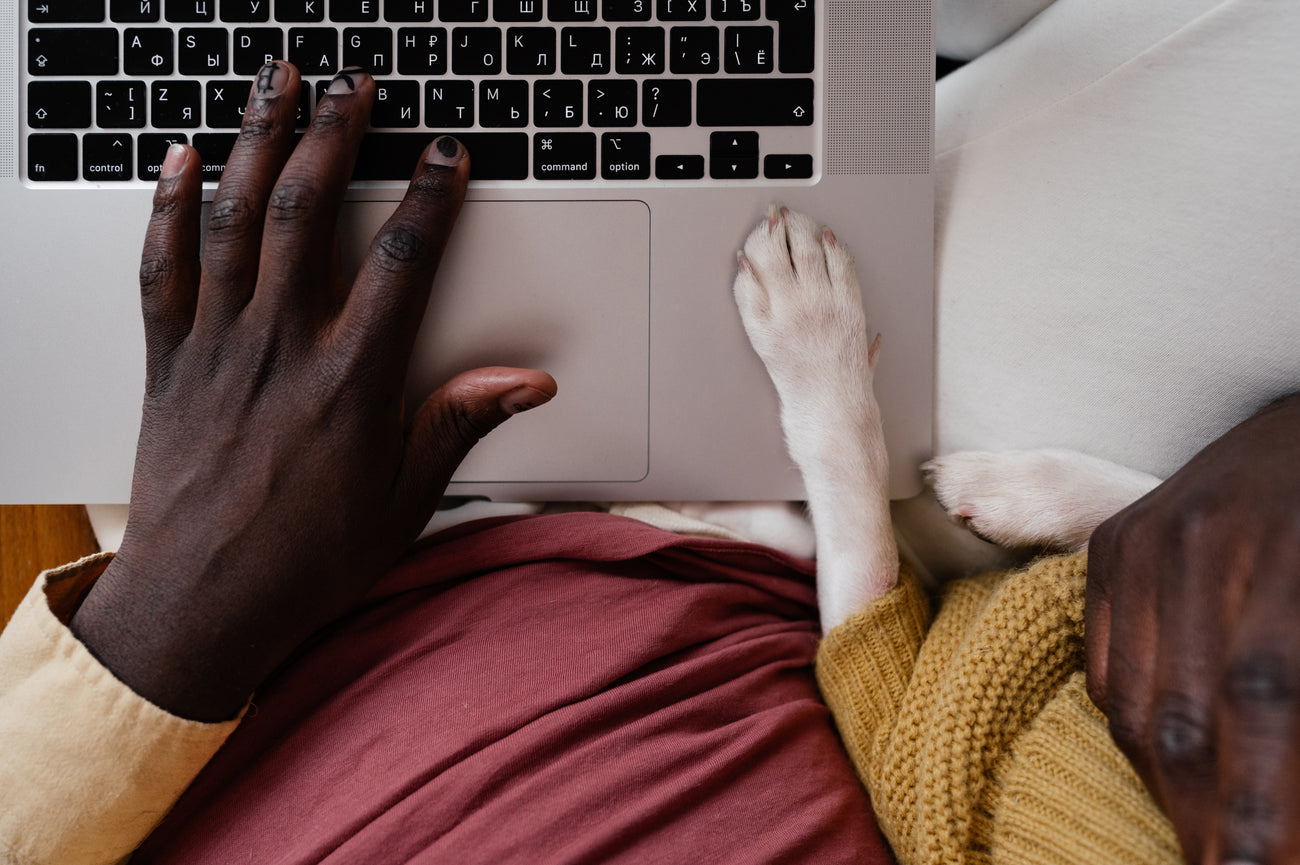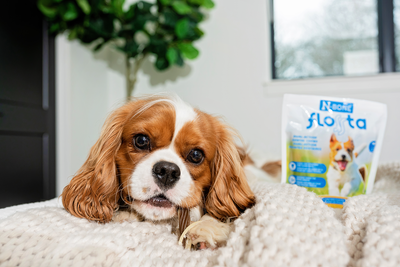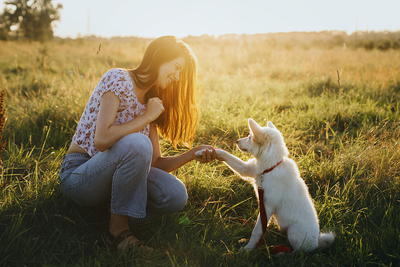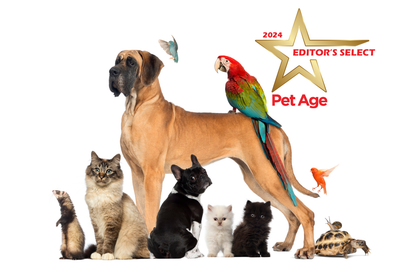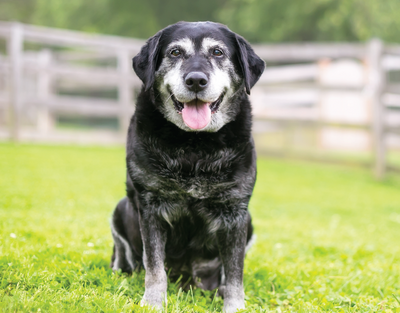To get them on track faster, maintain a consistent schedule for your puppy. Consider creating a daily puppy schedule that includes potty breaks, feeding and playtimes, puppy training sessions, and nap times! This will help your puppy learn to understand the daily household routine, feel confident and secure, provide structure, and promote good behavior.
Start command combinations and working indoors. Try to get your puppy practice duration work by holding their commands longer, for example, a long Sit and Stay, and also try to link some commands together! Here’s a fun combination to try: Sit > Down > Stay > Come > Place. You can work on different combinations to keep your puppy engaged!
Experts recommend confining the puppy to a defined space, whether that means in a crate, in a room, or on a leash. As your puppy learns that they need to go outside to do their business, you can gradually give them more freedom to roam about the house.
Keep training sessions short and fun. End each session on a positive note. If you feel your dog is having a difficult time learning or being “stubborn,” evaluate the speed of your training and the value of your rewards. Do you need to slow down and make the steps easier, or does your dog need a bigger paycheck for a harder exercise?
Socialize early and often. It’s recommended that you begin socializing your puppy as soon as they’re old enough. Take them to pet stores, parks, anywhere dogs are allowed. Socializing your puppy when he is young will build his confidence, make him friendlier toward strangers and other dogs, and help him learn to remain calm and respectful outside of your house. Here are the 10 signs your “healthy” pet is showing dog illness symptoms.
Consistency is key. It’s not easy learning how to train a puppy, but crate training is an excellent way to help them settle into your home and get them on a schedule. Once your puppy adjusts to its new schedule he will learn to anticipate bathroom breaks and bedtime, making your life a lot easier. Diana Lipari, who breeds and shows beagles with the American Kennel Club, had these wise words for first-time pet owners: “A lot of people make the mistake of thinking that once the dog is six months to a year, they can let them roam freely. If they are home by themselves, they may get bored, they want something to do, and that means ripping up your sofa. So, it’s always good to train puppies to love their crates. One way to do that is to give them treats every time they go in their crates and feed them from their crates. They’ll learn to love their crates and then you can leave them in the crates when you go out, as long as it’s not a long time.”
Aggression is defined as threats or harmful actions directed toward another individual and can include threat displays, lunging, growling, snarling, snapping, and biting. In animals, aggressive behaviors are a means of communication.
Training should begin in a quiet environment with few distractions. The chosen reward should be highly motivating so that the puppy focuses entirely on the trainer and the reward. Although a small food treat generally works best, a favorite toy or a special dog treat might be more appealing. It might also be helpful to train the puppy just before a scheduled mealtime when it is at its hungriest. For difficult or headstrong puppies, the best way to ensure that the puppy will perform the desired behavior and respond appropriately to the command is to leave a leash attached and to use a head collar for additional control. In this way, you can prompt the puppy into the correct response if it does not immediately obey, and the pressure can be released as soon as the desired response is achieved.



